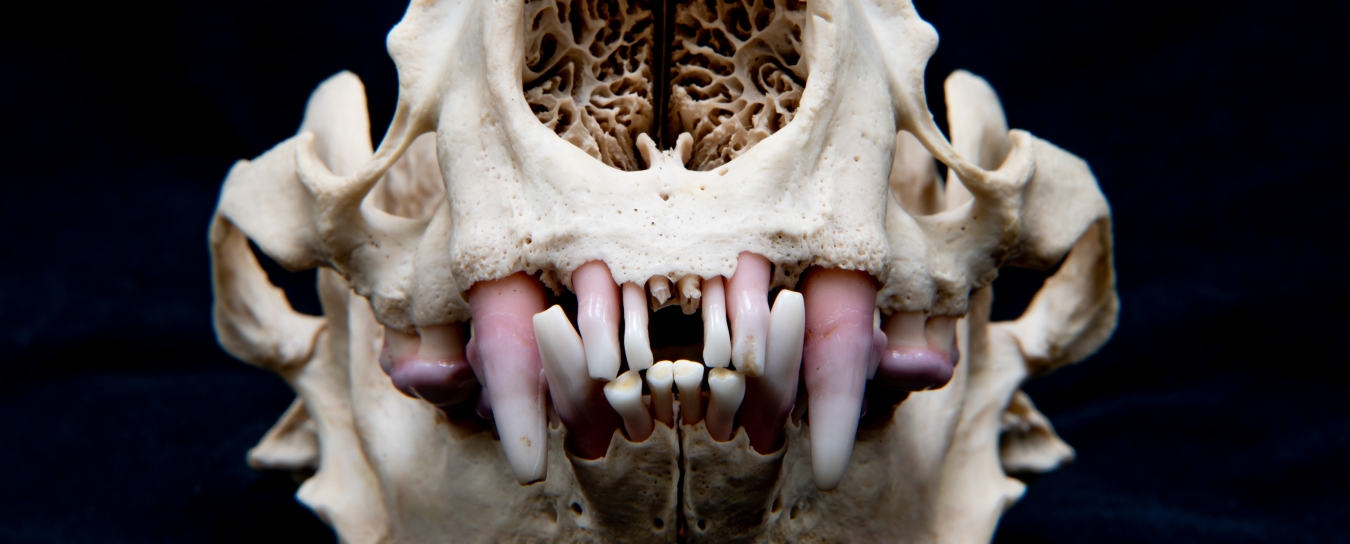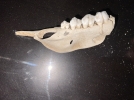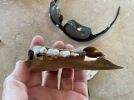
Vertebrates
Browse our Q&A about birds, eggs, nests, amphibians, reptiles, and mammals of the Central Coast and Channel Islands.
- Anthropology
- Rocks & Fossils
- Invertebrates
- Vertebrates
- Botany
- Astronomy
- Fungi
- General
- Recently Asked
Bone/teeth
I found , see pics, boon teeth look jawline to me but I have no clue what animal, if it's old, if it new etc. can you help me identify? My research has me guess seal


Curator Response
Hi Lorraine,
Thank you for sending us this interesting bone fragment with teeth. Although it’s hard to be certain from photos, I’m pretty sure it’s not from a seal, and I’ll explain why.
Seal teeth—like those of carnivores in general—tend to be pointy. You can see this on the Harbor Seal skull replica in our Mammal Hall here at the Museum. The teeth on your fragment appear somewhat worn, but they also look more like the flatter teeth herbivores use for grinding. The teeth you found are kind of pointy and at the same time kind of flat—useful for omnivores, who need to both pierce and grind their food.
I suspect your jaw fragment came from an omnivore that lived on the land: a wild boar—Sus scrofa. This species is known to many here in the United States as feral swine, since they are the wild-living descendants of domesticated animals. They have really weird-looking molars and premolars (like these) and the big hole in the bone fragment you have may be where a tusk—much larger than the nearby premolars—was once rooted in the bone. You can see lots of views of boar teeth in this 3D model and try and look for the section that matches what you have. That model is based on a European specimen, but the boars we have here in the Americas are also European in origin; they were introduced in the 1500s.
Stay curious,
Curator of Vertebrate Zoology Krista Fahy, Ph.D.


